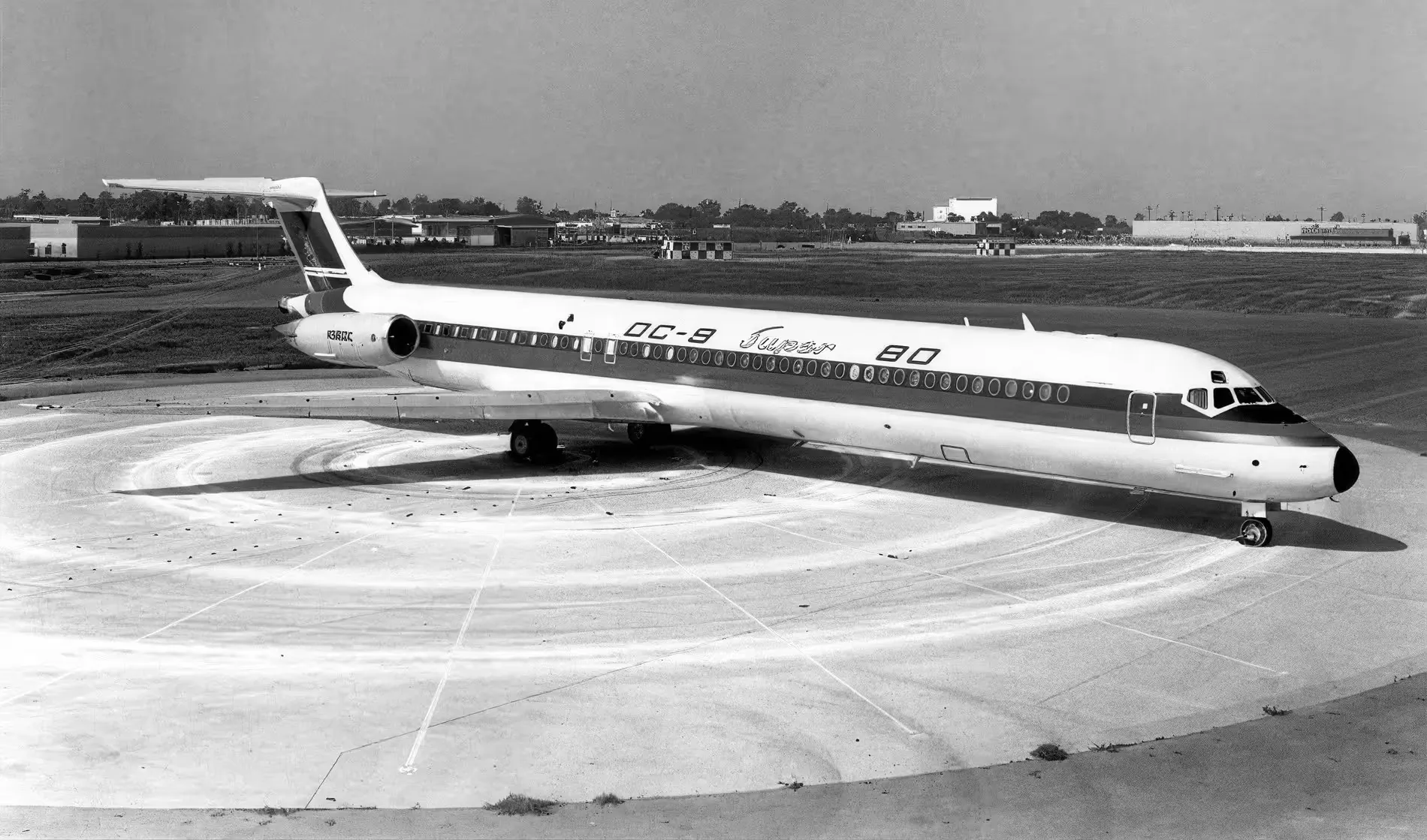DALLAS — Today, in 1979, the McDonnell Douglas MD-80 conducted its inaugural flight. The jet was certified on August 25, 1980.
Swissair (SR), the launch customer, received the initial airliner on September 13, 1980, and put it into service on October 10, 1980. The aircraft would become a workhorse on short-haul routes for many years to come.
The DC-9 Super 80
The DC-9 Super 80 was the original designation for the McDonnell Douglas MD-80. Lore has it that the type became known as the "Super 80" after one of the McDonnell executives said in the speech regarding the MD-80 that it was a super plane for the 80's.
Regardless of whether this is true or not, as the type certificate (TC) indicated, the type designation remained the original (DC-9 prefix) to reduce certification costs.
Alternatively, the new (MD prefix) was included in parentheses, as in DC-9-81 (MD-81), DC-9-82 (MD-82), DC-9-83 (MD-83), and DC-9-87 (MD-87). The MD designation was officially certified for only the final variant, the MD-88.

Development of the Mad Dog
McDonnell Douglas developed the MD-80 series of single-aisle airliners with a 3-2 seat configuration. The developer company was responsible for its production until August 1997, when Boeing Commercial Airplanes assumed responsibility.
MD-80 was the second iteration of the DC-9 family, initially known as the DC-9-80 (DC-9 Series 80) and stylized as the DC-9 Super 80 (short: Super 80). The aircraft program was initiated in October 1977 and utilized Pratt & Whitney JT8D-200 engines with a higher bypass ratio and a stretched and enlarged wing. The two 18,500-pound-thrust engines would give the MD-80 speeds of over 500 mph.
The aircraft series would feature innovations such as EFIS displays, a glare shield-mounted flight guidance control panel, flight director, auto-throttle, a propulsion mode selection system, and an auto-land system, in addition to two autonomous digital flight guidance computers.
While the MD-80 was not officially redesignated until 1983, the jet was affectionately referred to by a different name.
The Mad Dog appellation was derived from its MD initials and the fact that it produced an roaring noise when it took off. Additionally, unlike subsequent automated aircraft, the Mad Dog needed the pilot's complete attention during takeoff and landing.

MD-80 Series Variants
While the fuselage cross-section remained the same, the MD-80 is 14 feet (4.3 meters) longer than the DC-9-50 and has a 28% larger wing. The larger variants (MD-81/82/83/88) are 148 ft (45.1 m) long and accommodate 155 passengers in a coach. With variable weights, they can travel up to 2,550 nautical miles [nmi] (4,720 km; 2,930 mi).
The MD-87 is 17 feet (5.3 meters) shorter than the MD-80, which can accommodate 130 passengers in economy and has a range of up to 2,900 nautical miles (5,400 kilometers; 3,300 miles). The MD-88's modern cockpit would feature EFIS displays.
The MD-80 series initially competed with the Boeing 737 Classic and later with the Airbus A320ceo family. The MD-90, introduced in 1995, was a further extension of the line, powered by IAE V2500 high-bypass turbofans.
The MD-95, which was subsequently renamed the Boeing 717, was a shorter version of the MD-90, powered by Rolls-Royce BR715 engines. After Boeing had delivered 1,191 MD-80s, production ceased in 1999.
Around a hundred Mad Dogs are still in service today.



.webp)
